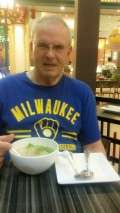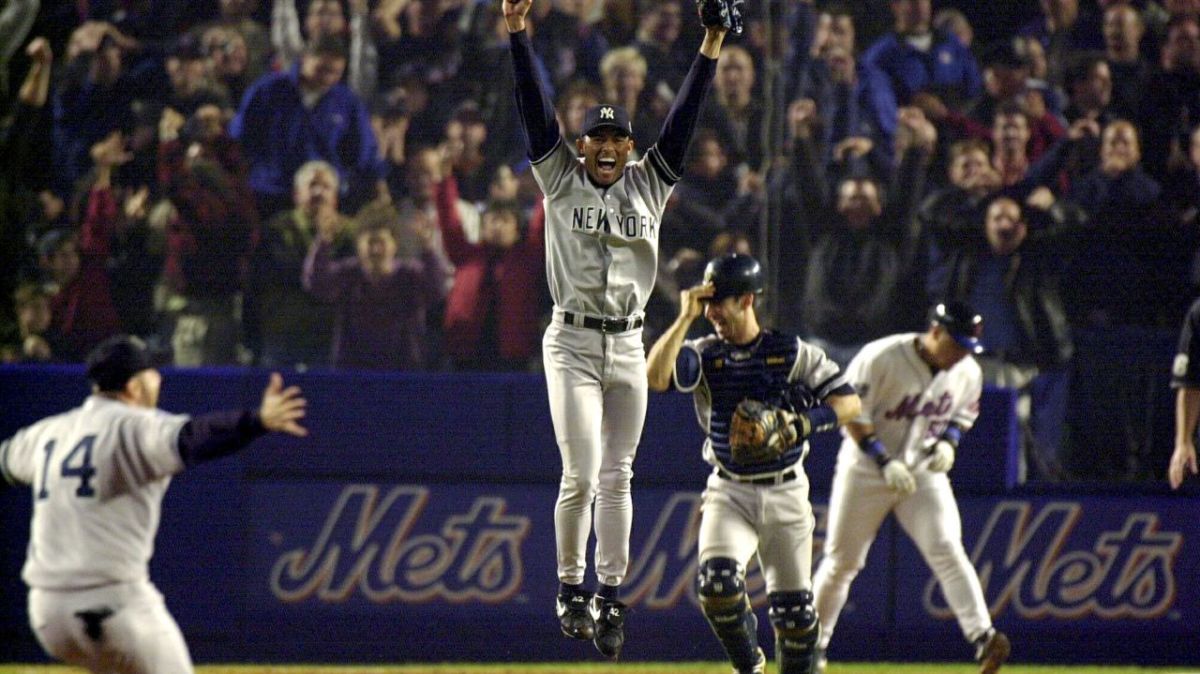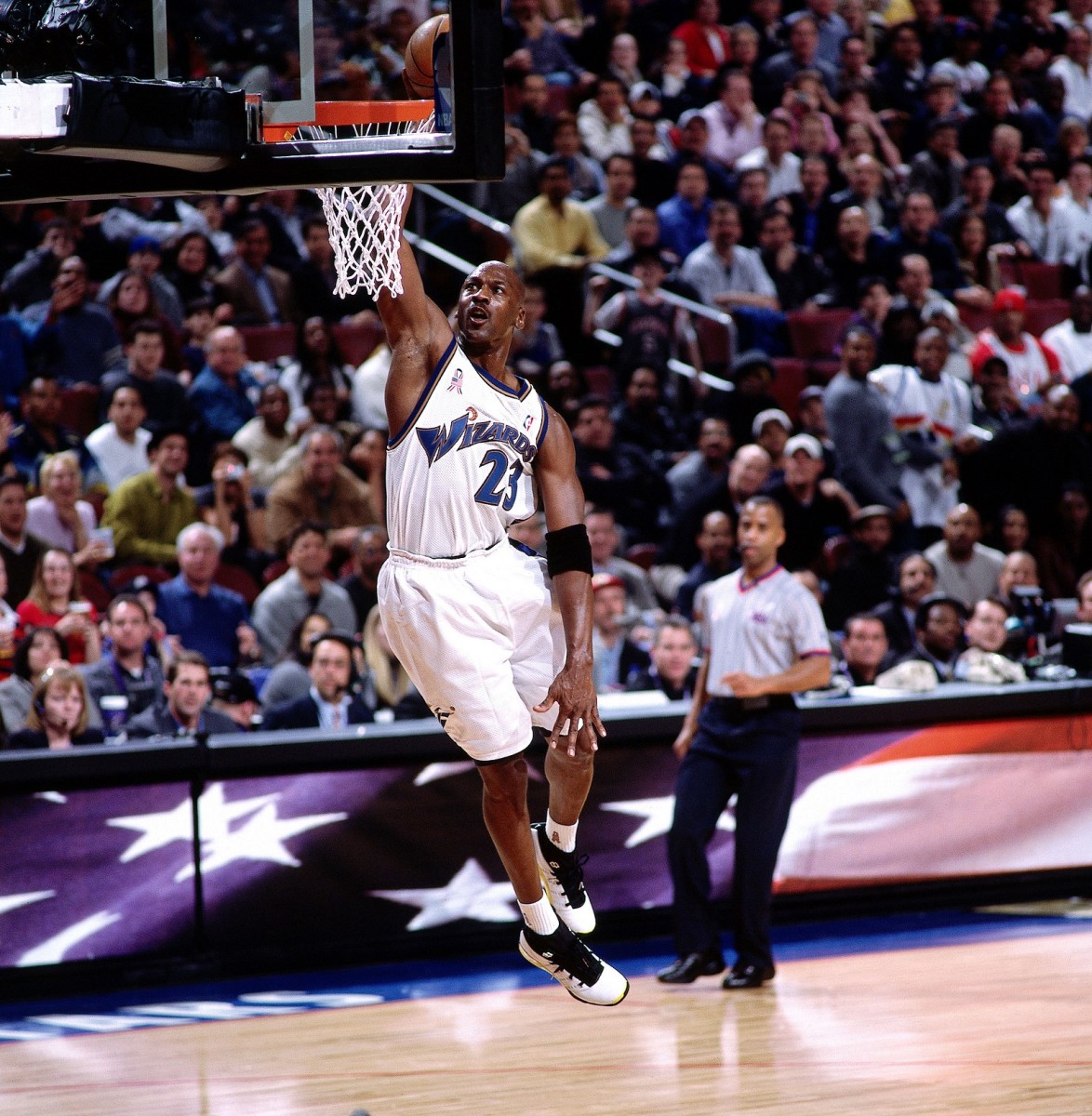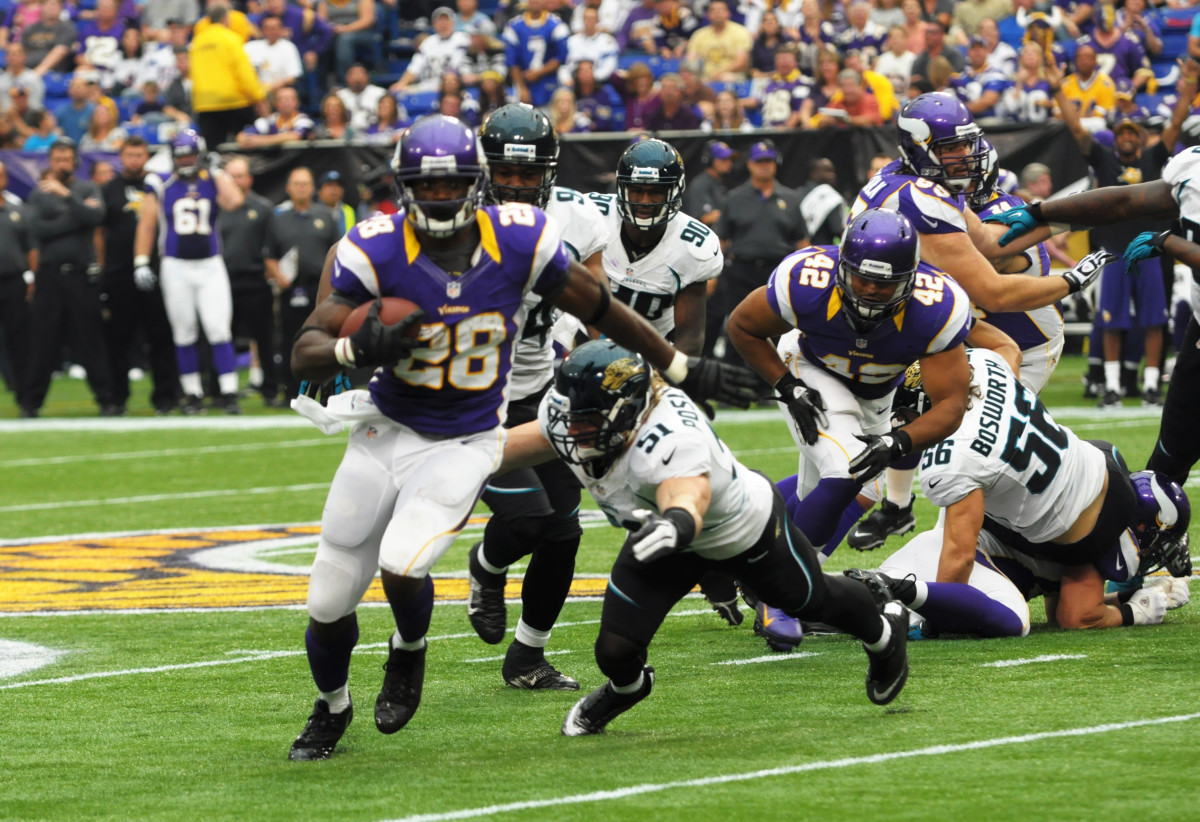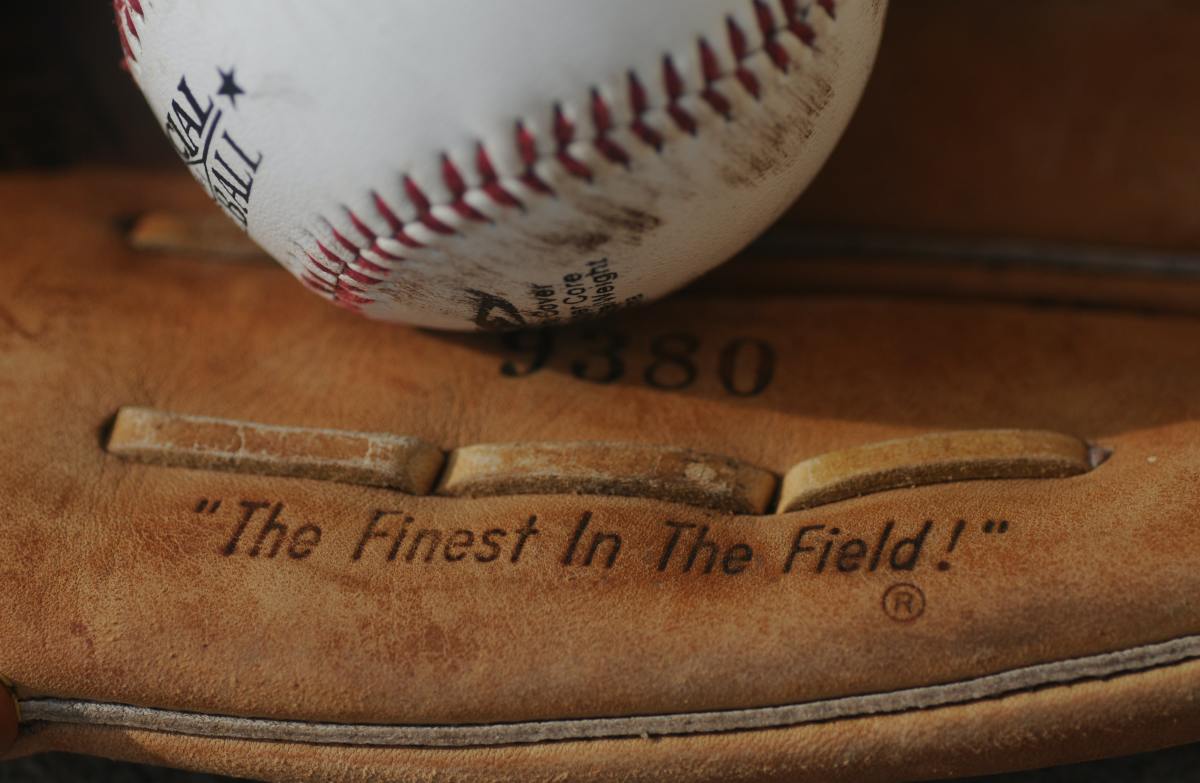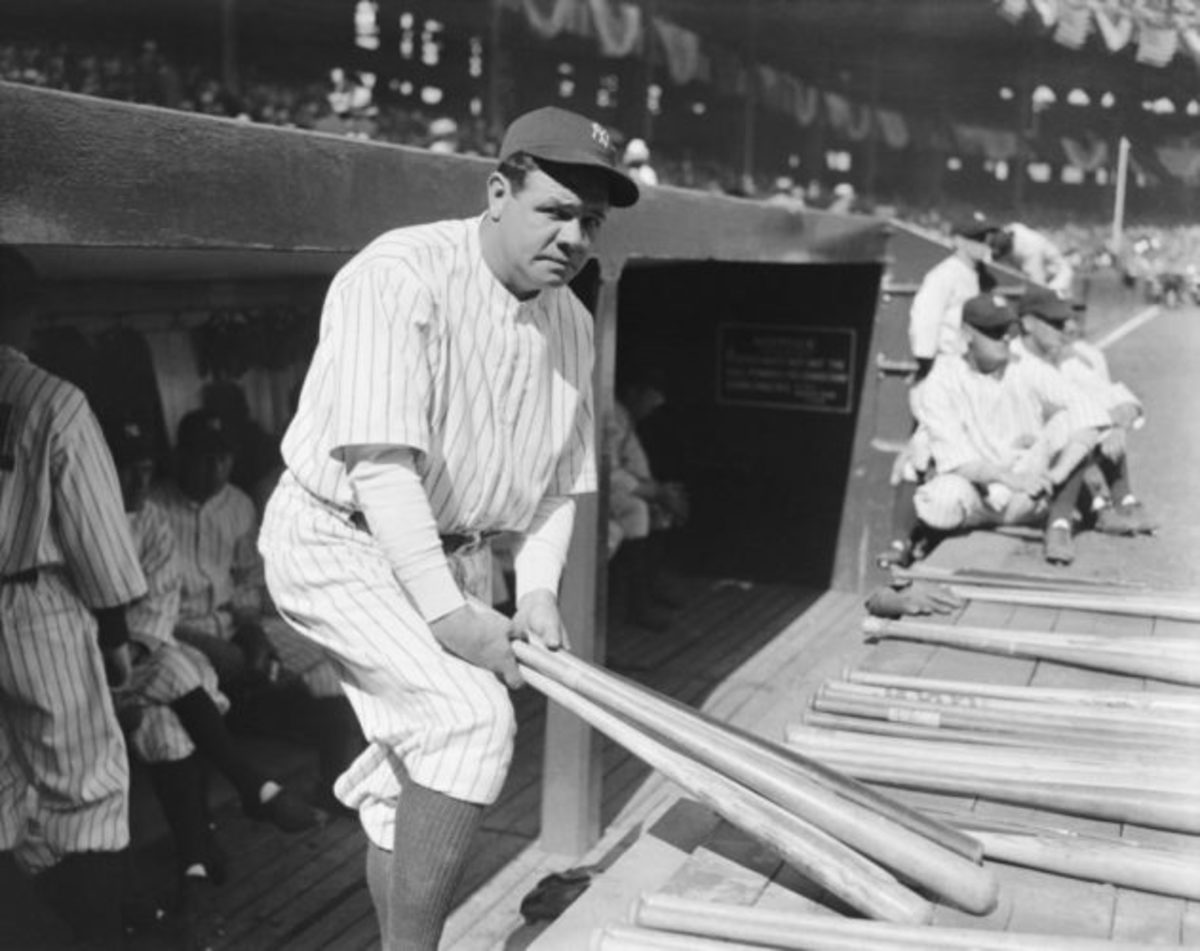- HubPages»
- Sports and Recreation»
- Team Sports»
- Baseball
Exiled Royals, Kings of the Postseason
Shadow Monarchs
This year, the Kansas City Royals ended their long exile from the postseason. They didn’t just make it back to October – they made it all the way to 90 feet from tying things up in the bottom of the ninth of Game Seven of the World Series.
The team hadn’t even been close to joining the Fall Classic competition before last season, winning no more than 84 games from 1986 through 2012. Yet their alumni – and especially their draft picks – made a significant impact in virtually every playoff run of the past 20 years.
Some of the names are very familiar and obvious – Carlos Beltran, Jeremy Affeldt, Jermaine Dye, Jeff Suppan, Mark Ellis and Johnny Damon. Others, well, not so much. Remember Jeremy Giambi? If you do, it’s for a not-so-bright playoff moment, being thrown out at home by Derek Jeter on his famous flip play. Drafted by the Royals in 1996, Giambi played two years in Kansas City, then joined the A’s for two and a half years. In his two Oakland Octobers, he hit .333 and .308. That’s right – the younger Giambi had a lifetime .318 playoff average, going 7-for-22 against the Yankees.
1985 World Series Trophy
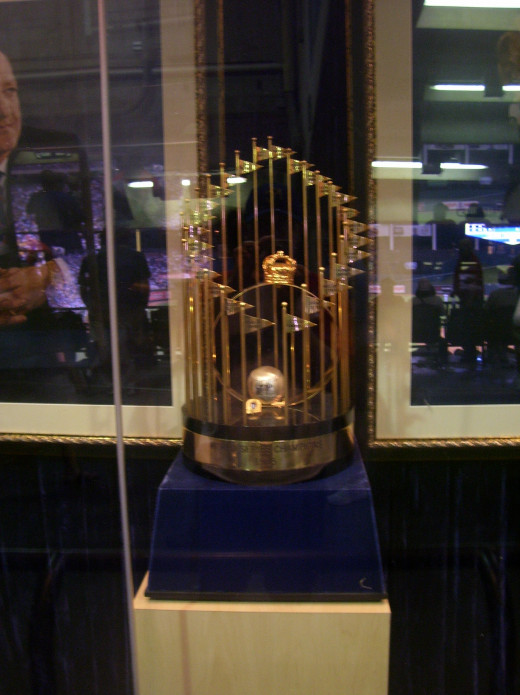
A Royal Future
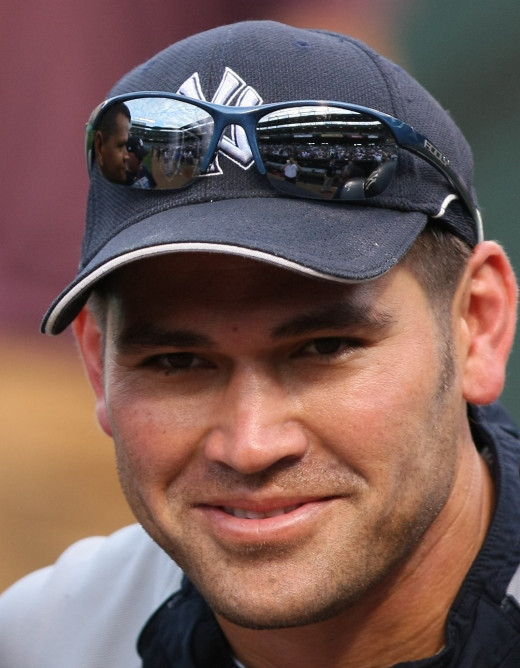
Party Like It’s 1999
There were two talented young teams that caught my attention in 1999. While working at the Associated Press sports headquarters, I had a lot of fun following the everyday goings-on around the league.
One team was the Twins. They had the players to break out in another year or two, I felt, so long as they added some pop – or if David Ortiz would turn into a 30-homer guy. For the record, I gave up on Ortiz just as the Twins did.
The other was the Royals. Their lineup was strong nearly from top to bottom. But their strongest feature was their young outfield. Johnny Damon and Jermaine Dye were 25, and Carlos Beltran 22. I was certain it would be the best in baseball for years to come, and that as long as the rotation improved, the Royals could contend.
Obviously, that did not happen. That 1999 KC roster, however, did make a massive impact on the playoffs of the next 15 years. Even the lesser Royals did their part. There’s Giambi, Rey Sanchez (.294 for the Braves in the 2001 NLCS) and Joe Randa (.364 for the 2005 Padres in the NLDS). A few other guys played for World Series winners or playoff teams, but didn’t do so well or had bit parts, like Jay Witasick, Kevin Appier, Chad Durbin or Sal Fasano.
Two major contributors to both the 1999 Royals and future champions were not originally KC property. Jermaine Dye debuted with the 1996 NL champs, the Braves, and was sent to the Royals the next year. He hit 27 homers and drove in 119 runs for KC in 1999. He stayed at about that level for years, joining the ascending A’s in 2001. He went 3-for-13 with two doubles in the ALDS, but left with a broken leg in Game Four. Dye brought the A’s back to the playoffs the next two years, hitting .400 with a homer in the 2002 ALDS and .231 with a homer in the 2003 one. Dye then led the 2005 White Sox to the title, winning the World Series MVP, hitting .438 with a homer against the Astros. In his final playoff appearance, Dye hit .375 with a homer against the Rays in the 2008 ALDS. For his career, Dye hit .270 with five homers and nine RBI in 44 playoff games.
Suppan came to KC via Boston and Arizona. He tied for the team lead with 10 wins in 1999, and won the same number each of the next two years. Soup had played for playoff teams with the Red Sox in 1995 and 2003, but did not appear in the postseason until 2004. A grizzled veteran at just 29, Suppan went 16-9 for the 2004 Cards, and went 2-2 in the playoffs, helping his team to the pennant. After another 16-win season in 2005, and five effective playoff innings, he went 12-7 for the champs in 2006, winning the NLCS MVP. He allowed just one run and five hits over two starts in that series. In 2008, Suppan helped the Brewers return to the playoffs after 26 years, losing his only appearance in the NLDS. For his career, Soup went 3-4 with a 3.63 in the postseason.
And now, five guys drafted by the Royals who played with the team and then helped shape the past two decades of playoffs.
Conine the Barbarian
The Royals drafted Jeff Conine in 1987. After 37 games with KC, Conine was taken by the Florida Marlins in their expansion draft before the 1993 season. Conine hit 12 homers and batted .292, playing every game and finishing third in the Rookie of the Year voting. He was a steady star for the team, and he was the last remaining original team member when they made the postseason for the first time in 1997. Conine hit .364 in the NLDS and went 9-for-42 during Florida’s first championship run.
Mr. Marlin was then shipped back to Kansas City, spending a year in mediocrity. He went to Baltimore in 1999, resuming a fairly steady contributory level. Late in the 2003 season, the surging Marlins traded a pair of players to get Conine back. He hit just .238 in 25 games, but the move clearly paid off in October. Conine hit .267 in the NLDS, then homered and went 11-for-24 in the NLCS. He hit .333 in the Series, helping the Marlins make it two titles in seven years.
In his two playoff runs, Conine hit .304 with a homer and eight RBI in 32 games.
David Cone
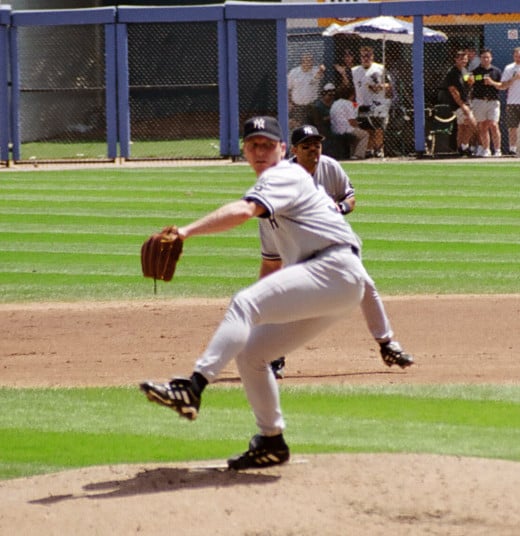
David Cone: Have Arm, Will Travel and Win
David Cone was born to play in Kansas City. And New York and Toronto, but he was actually born in KC. And while he changed teams many times, it was only in the next-to-last of his 17 years that he played elsewhere.
Cone was drafted by the Royals in 1981. After 11 games in relief in 1986 for the defending champs, he was traded to the Mets, the new defending champs. Cone went 20-3 with a 2.22 ERA in 1988, his first full season. He went 1-1 with a 4.50 ERA against the Dodgers in a losing effort in the NLCS. Late in the 1992 season, Cone was shipped to Toronto, where he went 4-3 with a 2.55. Coney went 1-1 with a 3.00 ERA in two starts in the ALCS, then had a 3.48 ERA with no decision in the World Series, driving in one run for the first-time champs.
After the season, Cone signed with his hometown team, putting in two solid years before being traded back to the Jays. He was then traded midway through the 1995 season to the Yankees, returning to New York.
Cone became the ace of the staff, helping to build the Yankees’ dynasty. He went 9-2 with a 3.82 ERA in 13 starts after the trade. He went 1-0 with a 4.60 ERA in two starts against Seattle in the NLDS. Cone suffered an aneurysm in the 1996 season, but pitched well in limited time. He started once in each series as the Yankees went on to win their first title in 18 years. He went 1-1, the win coming in the World Series, where he gave up one run in six innings.
Cone performed poorly in his only start in the 1997 postseason, but came back strong in 1998. Exactly 10 years after his first 20-win season, he did it again. And this time he won a game in each the ALDS and ALCS, then allowed two runs in a six-inning no decision in the World Series. Another title run in 1999 gave Cone a chance to win in the ALCS and Series in his only two October starts, going seven scoreless against Atlanta. Despite a horrific 2000 season, Cone made it into two relief outings in the playoffs, going 1 1-3 scoreless innings. He finished 8-3 with a 3.80 ERA in 21 games, 18 starts, during the playoffs.
Johnny Damon
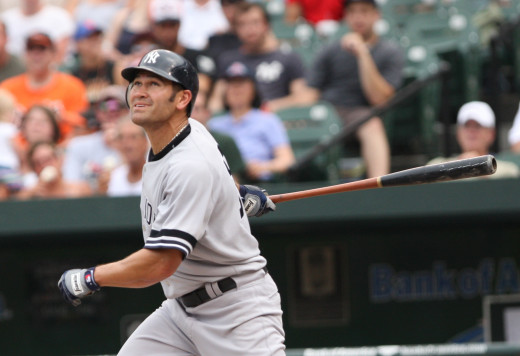
Damon Swipes Second and Third
- Broadcasters call Damon's steals | MLB.com
Television and radio broadcasters call Johnny Damon's daring stolen bases in the ninth inning of Game 4 of the 2009 World Series.
Johnny Damon, October Demon
Johnny Damon took four different teams to the playoffs, and two to titles, over eight October runs. But the Kansas native was drafted by the Royals and played more years and more games for KC than any other team.
Debuting in 1995, Damon took the center field job the next year and reached stardom in 1998, scoring 104 runs, hitting 18 homers and stealing 26 bases. It was the first of nine straight 100-run, 30-double seasons. He moved to left when Beltran joined the team in 1999.
After leading the league with 136 runs and 46 steals in 2000, Damon was part of a three-team deal that landed him in Oakland. Despite the weakest season of his prime, he landed in the postseason for the first time. Taking on the Yankees, Damon went 9-for-22 with two doubles and a triple. That A’s team also featured former Royals Jermaine Dye, Jeremy Giambi, Mike Magnante and Sal Fasano.
Damon left the A’s during the offseason, signing with Boston. By 2003, the Red Sox were knocking on the door of the World Series. Damon hit .316 with a homer to help knock out the A’s in the ALDS, then hit .200 in the seven-game heartbreaker against the Yankees.
In 2004, Damon was one of the key players in ending the Red Sox’ long title drought. After an outstanding regular season, with 20 homers, 19 steals and a .304 average, the squad’s Caveman (he sported very long hair and an unkempt beard) went 7-for-15 against the Angels, hit two homers and drove in seven runs in the stunning upset of the Yankees, and homered and hit .286 in the World Series. Just as it could be said that Cone restarted the Yankees, it could be said that Damon restarted the Red Sox.
Boston had the lesser Sox in 2005, losing to Chicago in the ALDS, Damon’s final appearance in the red and white. He joined the Yankees as a free agent, and hit a homer in his first series for the Pinstripes. In the 2007 ALDS, he hit two homers and drove in five runs in a loss. When the team rebounded in 2009 and made it to another championship, Damon struggled in the ALDS, but hit two homers, drove five runs in and batted .300 in the ALCS. He was masterful in the Series, stealing three bases and hitting .364.
Damon bounced around the next three years, his final seasons. He had one more shot at the playoffs in 2011 with Tampa, which snuck in on the last day of the year. He homered in that series, too.
For his career, Damon hit 10 homers, drove in 33 runs, stole 13 bases and hit .276 in 59 playoff games.
Carlos Beltran
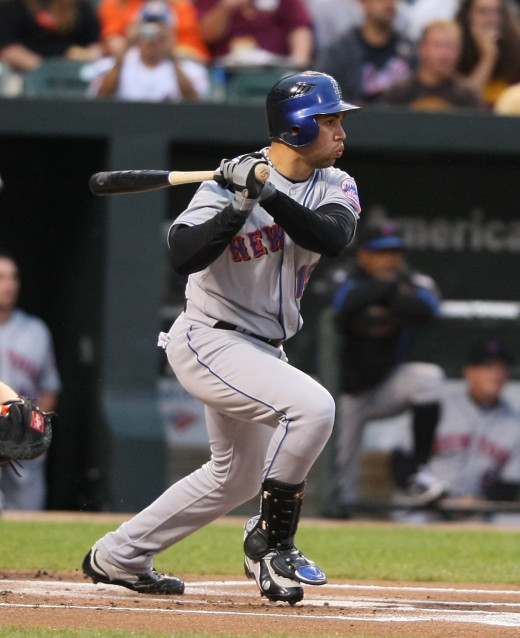
Beltran Strikes... Out
- Wainwright saves NLCS Game 7 | MLB.com
Adam Wainwright strikes out Carlos Beltran to win it for the Cardinals in Game 7 of the NLCS, sending them to the 2006 World Series
Carlos the Great, The Playoff Master
Carlos Beltran has never won a title. Yet he’s perhaps the greatest playoff performer ever, and certainly the best without a championship. Beltran was drafted by the Royals in 1995, debuted in 1998 and broke out in grand fashion in 1999, winning the Rookie of the Year Award. During the 2004 season, having already established his bona fides, Beltran was acquired by the Astros for an effort to make the playoffs.
Beltran’s brief Astros tenure was amazing. He hit 23 homers in 90 games, then demolished the Braves in the NLDS, going 10-for-22 with nine runs, two doubles, two steals and four homers. Against the Cardinals, he went 10-for-24 with 12 runs, a double, four homers and four steals. He was one win away from the Series. The 12 runs in the NLCS is a record. His 21 runs remains the single-season playoff record. His eight homers is tied for the most, and his 47 total bases is tied for second.
Two years later, Beltran helped the Mets get one win away from the Series. After a non-descript NLDS, he hit .296 with eight runs, a double, three homers and a steal against the Cardinals. Unfortunately, he will forever be remembered for watching strike three to end the series.
Beltran joined the defending champ Giants midway through 2011. He hit .323, but they didn’t make it back to the playoffs. Then he joined the defending champ Cardinals in 2012.
His two previous playoff runs were great, but Beltran was now 35. Could it have been a freak result, even for a superstar? Nope. After a hit in the Wild Card game, he hit .444 in the NLDS, with two homers, a steal and three doubles. In the NLCS, he hit .300 with a homer, two steals and three doubles. He ended up two wins shy of the World Series, though.
Finally, he made it to the Series in 2013. Beltran hit a double and two homers in the NLDS, drove in six runs, doubled twice and tripled in the NLCS and hit .294 in the Series. His team ended up two wins shy of the title.
In 51 playoff games, Beltran has hit .333 with 45 runs, 13 doubles, a triple, 16 homers, 40 RBI and 11 steals. He is tied in ninth in homers. He is tied in fifth for LCS runs. He is eighth in LDS on base percentage, second in slugging, third in OPS, tied in tenth (with Damon) in runs, tied in fourth in homers, tied in sixth in RBI.
Jeremy Affeldt
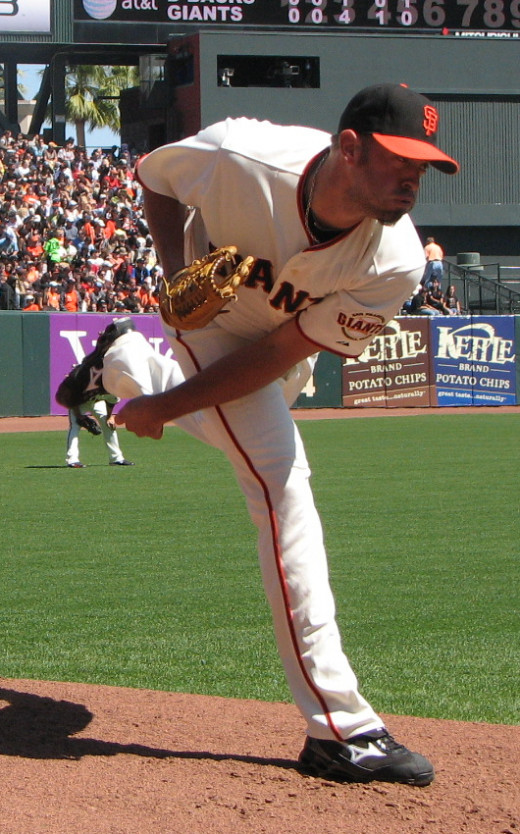
A Giant of a Reliever
When the Royals did finally return to the Series and knocked on the championship door, Jeremy Affeldt beat them in Game Seven. Affeldt was a longtime Royal, drafted by the team in 1997 and debuting in 2002.
As a Royal, Affeldt was serviceable in relief and a few starts, but not remarkable. He had a 3.93 ERA in 2003 and 13 saves in 2004. After a horrible 2005 campaign and even worse first half of 2006, he was shipped to Colorado.
The Rockies made an amazing run down the stretch in 2007 and then romped through the playoffs into the World Series. Affeldt was 4-3 with a 3.51 ERA, getting into only a few innings before the Fall Classic. The Rockies lost in four games, all of which Affeldt appeared in, pitching three scoreless innings.
After a solid year in Cincy, Affeldt joined the Giants in 2009, where he received a vote for MVP due to his 1.73 ERA. He’s remained a steady part of the team ever since, with a 2.76 ERA in 362 games over six seasons.
In 2010, San Fran surprised all of baseball. Affeldt appeared in three NLCS games and two Series games.
Two years later, the Giants were back, and Affeldt appeared 10 times in the postseason, posting 10 1/3 scoreless innings.
And two years after that – this year – San Francisco reclaimed the crown and Affeldt upped his game even more. He pitched 11 scoreless outings, 11 2/3 innings, and picked up two wins.
In four playoff runs, Affeldt has three rings, a 2-0 record with an 0.86 ERA and 20 strikeouts in 31 1/3 innings.
Crowning the Royals
Which player do you think might have made a bigger difference in turning the Royals into contenders had he stayed in Kansas City?
It All Came Together
Sure, you might say, when you look at 30 years of a team’s players, there are many pathways to success even if that team is woeful. Maybe a search of 30 years from the Browns’ history would also turn up a bunch of successful champs.
But here’s the thing: I really didn’t come into this undertaking with the intention of cherry picking. After being fascinated by the Royals outfield in 1999, I noticed that the trio just kept showing up in big moments over the following decade. When the Royals made the World Series, I saw the team go up against Affeldt. When I looked back at some other Royals, I saw the forgotten Appier connection to the Angels and Conine’s KC start. I always thought of Cone as the “year after” guy in connection to the Royals. In this context, he bridges the champs of the 90s with the Dye-Damon-Beltran years.
I might have missed a few guys, since I didn’t exactly do a full search for every single Royal. That’s not the point. Nor is it that the Royals are the only team to have this kind of influence. The point is that it is obvious that KC alumni have had an impact while the team has not.
And think about all of the obstacles a single player must hurdle to make this list. They need to make the majors after being drafted, hardly a guarantee. They need to be good enough to be desired by another team, then lucky enough to land there. They need to join a good enough team to make the playoffs or be good enough to stick around long enough to contribute to such a team. Then they have to deliver in October and run the gauntlet.
Easy enough, right? Ty Cobb, Ted Williams, Barry Bonds, Ernie Banks, Carl Yastrzemski, Tony Gwynn and Robin Yount never won titles.
Even in an era where a great player on great teams will make the playoffs most seasons, it’s not easy. Mike Mussina joined the Yankees in 2001 after they won three straight titles. Jason Giambi joined them the next year. They stayed around through 2008. The Yankees won their division title from 2001-06 and made the playoffs in 2007. They had three 100-win seasons and won two pennants. Giambi and Mussina remained stars through most of the run. Both also were on fierce teams that made the playoffs before joining New York. Neither ever won a title.
This group did not just deliver a bunch of titles, but they did it for different teams, forming an amazing bridge from year to year, with just a few gaps, from the late 90s until the present.
David Cone, 1992. Cone, 1996. Jeff Conine, 1997. Cone, 1998. Cone, 1999. Cone, 2000. Conine, 2003. Johnny Damon, 2004. Damon, 2009. Jeremy Affeldt, 2010. Affeldt, 2012. Affeldt, 2014.
Four guys, 12 titles, none overlapping, and major contributors. Oh, and there’s Appier (2002), Dye (2005) and Suppan (2006). And possibly the greatest postseason player ever in Beltran – still titleless.
Kansas City may not have been in the playoffs for decades, but former Royals sure took the crown.

